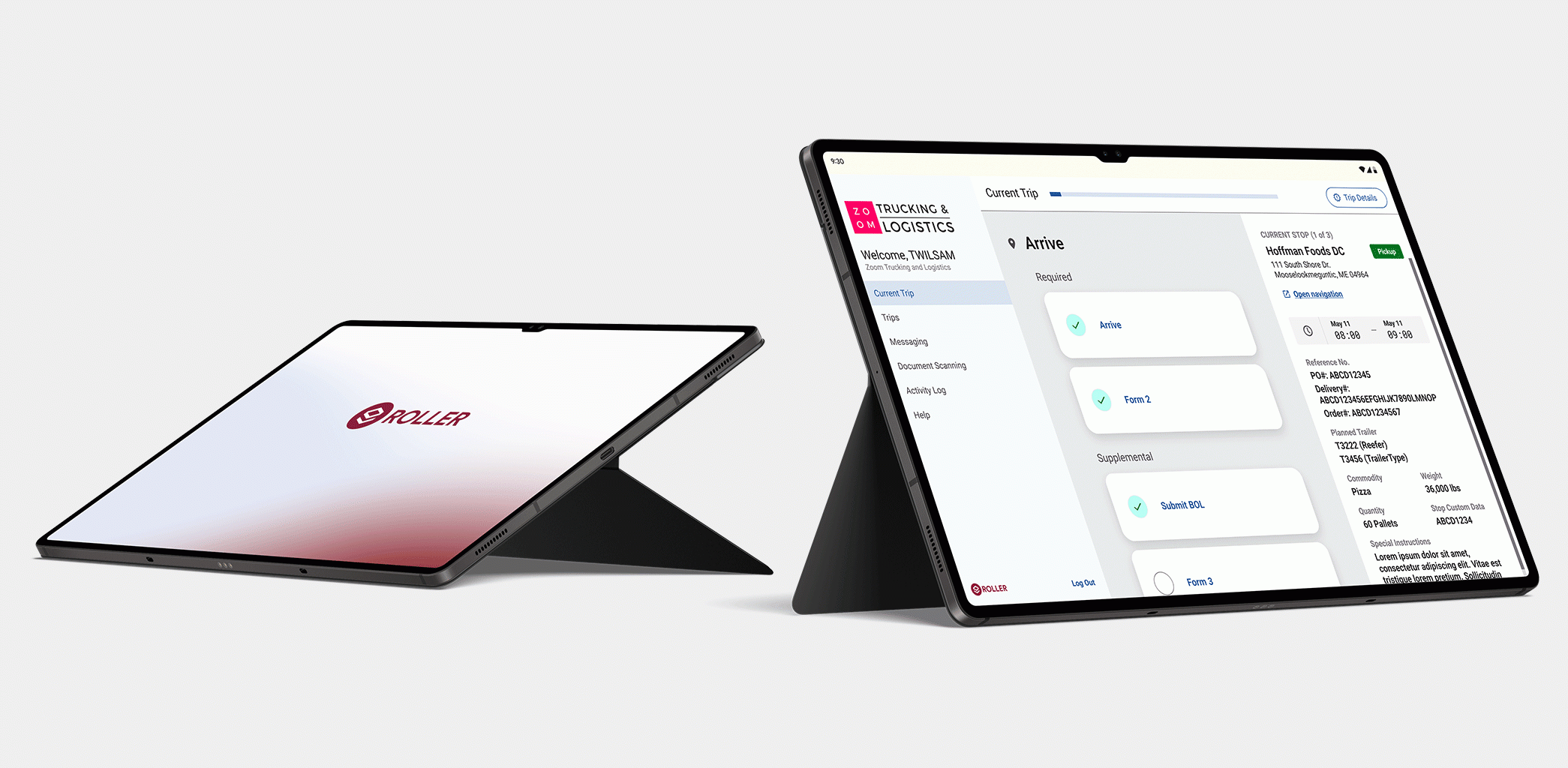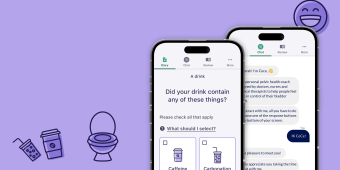A guide to mobile app strategy for healthcare companies

At a 1983 conference in Aspen, Steve Jobs gave a presentation that predicted a "digital record store" where people would download discrete software applications over telephone lines. This was 24 years before Apple's first iPhone and 24 years before the App Store debuted with 500 apps. It was even 14 years before Snake, the addictive game that could be played on Nokia phones or discreetly during class on graphing calculators, ruined AP Calculus for a generation of students.
As of 2020, according to Forbes, those first 500 apps have ballooned to over 8.9 million apps. And according to Grandview Research, the mobile app industry surpassed $154 billion in 2019, with an expected compound annual growth rate of 11.5% through 2027. According to App Annie, as of 2021, consumers spend an average of 4.2 hours a day on mobile apps. That's a lot of apps.
We see the effect of the mobile app revolution in our daily lives. If we have a problem, one of our first instincts is to wonder if there's an app that solves it. There usually is. If there isn't, an entrepreneurial subset of the population wonders if they have stumbled on the next billion-dollar business idea.
The healthcare industry used to be exempt from app mania, but that exemption is over. Consumers expect healthcare apps to work wonders that would have seemed impossible in the change-resistant medical and healthcare field. It's time for every healthcare organization to get serious about their mobile health (or mhealth) app strategy to prosper in a world of mobile madness.
The driving force pushing healthcare companies into the mobile arena is the explosion of interest in telehealth and telemedicine. Basically, it's the death of the waiting room and forms on a clipboard, as if those didn't already feel like anachronisms.
Telemedicine and telehealth involve delivering medical services remotely via telephone or digital devices. The idea is simply this—much healthcare value can be provided without an in-person hospital or clinical visit by the patient, drastically improving patient convenience and organizational efficiency.
Many healthcare processes don't suffer due to a lack of in-person care. Some healthcare processes, like collecting biometric data and outpatient treatment adherence, can be enhanced by the use of remote monitoring mobile applications.
According to US News and World Report, telemedicine was growing before 2020 but still only reached 4% of the market. The COVID-19 pandemic changed all that. In the face of mass lockdowns and restrictions on non-emergency hospital visits, in-person treatment plunged by 23% in March 2020 and 52% in April 2020. Meanwhile, the popularity of telemedicine skyrocketed by over 1,000%.
Telemedicine is here to stay. From Zoom doctor consults to mail-in biological sample testing kits, consumers now look for app solutions to medical problems, just like they do with every other problem category.
Healthcare organizations that rush to meet that demand will enjoy a competitive advantage. Organizations that drag their feet will get left in the mobile dust.
Here are seven steps healthcare companies can take right now to start building their mobile app strategy:
Step 1: Define your mobile health app business goals
The first step to designing your healthcare mobile app strategy is defining the app's business goals. This involves understanding the role the app will play in the organization and determining the specific purpose it will serve. The app's ultimate goal may be to recreate existing services as a digital experience, introduce new services to retain patients, disrupt the industry with a new mobile healthcare concept, or improve current operations.
Regardless of the goal, it is essential to remember that the app is a tool to serve the organization and its customers. It is, therefore, necessary to have a clear understanding of the job to be done so that the right tool can be selected or created. By defining clear business goals for the app, you can can develop a strategy that aligns with their overall vision and mission. It ensures that the app serves a clear purpose and adds value to the organization and its customers.
Step 2: Understand your users and competition
Developing a successful mobile app in the healthcare industry requires more than technical skills and resources. The ability to connect with the target user base is critical to the success or failure of the app. Healthcare organizations must ask themselves, "why invest time and money in developing a mobile app that no one wants?"
One way to ensure that the app addresses the needs of the target user base is to conduct surveys. Surveys can be completed online or with current patients to identify their pain points and determine if the problem the app solves is worth solving. This information can create a "user persona," a dream user who cannot resist the app's value proposition. Questions such as the user's age, sex, occupation, hobbies, and medical issues can help create a targeted marketing strategy and better understand who the app is being built for.
The competitive landscape is another aspect to consider when developing a mobile app for the healthcare industry. Users not only have to accept an app as a solution but also choose it over other competitors in the market. Evaluating the competition and determining if a popular app already offers a similar solution is essential. Consider how you can make your app better or more calibrated to the patient's needs and why users would choose your app over a competitor's. Seeking expert advice and consulting with healthcare professionals can provide a realistic view of the competitive landscape and help you build an app that stands out.
Ask yourself questions like, "Is there already a popular app that offers the same solution?", "How can you make yours better or more calibrated to your patients' needs?" or "Why would a user choose your app over a competitor's?" This is the time to get realistic and consult experts.
Step 3: Find a development partner for your mobile healthcare app
Creating a world-class mobile app for healthcare organizations requires expertise and technical know-how, which most organizations lack in-house. The most practical solution is to partner with a third-party development agency to handle most of the work.
When searching for a development partner, consider their experience and track record of success in healthcare. Developing a healthcare app will likely be subject to strict regulatory requirements such as HIPAA. A successful compliance strategy may require an experienced hand, so choosing a partner who can help navigate the regulatory landscape is essential.
Finding a development partner with experience developing successful apps for organizations like yours can be beneficial. These partners would have first-hand knowledge of what works in your niche and understand the kinds of apps that resonate with your target market. They can provide valuable insights into user preferences and help tailor the app's design and functionality to meet the needs of your target users.
In addition to experience and expertise, consider the development partner's communication skills, development methodology, and technology stack. Open communication channels are crucial for effective collaboration. The development methodology needs to be flexible enough to accommodate requirements changes and user feedback, and the technology stack used by the development partner should be up-to-date and compatible with the healthcare organization's existing systems.
Step 4: Validate your mobile health app concept
Before you commit the resources to a mobile strategy, do your research. Ensure the app you envision has a warm market of customers interested in using it once you bring it to market.Researching to gauge the app's potential success is essential. Keyword research tools can be used to determine the number of people searching for a solution to the problem the app proposes to solve. Evaluate the feasibility of their app idea by analyzing industry trends, reading literature, and talking to experts.
In addition to conducting research, try a pre-launch "sale" to generate interest among potential customers. This can be done by offering interested consumers the opportunity to sign up as beta users. This pre-launch "sale" can help validate "product-market fit," meaning the app has already been sold before it is even created. This process can take much of the risk out of the development investment and help ensure the app's overall success and acceptance level.
Partnering with an experienced development agency will help you throughout the pre-launch and beta-testing phases. A development partner can help determine the best methods for testing the market for the app and offer guidance on how to validate your "product-market fit." They can also provide expertise and advice on development and implementation to ensure the app meets regulatory requirements and industry standards.
Step 5: Determine your MVP
In product development, MVP doesn't refer to a baseball player. It's the "minimum viable product."
App developers often envision a digital tool that can do a million things. After all, we're talking about software. The sky's the limit, right?
But if you wait until the app does everything possible, it will never reach the market. That kind of "forever" development lifecycle can bankrupt an agency. The goal of the MVP stage is to get the app into the hands of users as fast as humanly possible. For your MVP, strip the concept down to the bare essentials. What is the minimum number of features and functions your app can perform to fulfill the business proposition you defined in Step 1?
Your first iteration of the app—the "minimum viable product"—will fulfill only these essential functions. New features and upgrades can always be added later.
The MVP stage of mobile health app development is crucial to getting your app to market quickly. Many app developers have grand ideas for what their app should be able to do, but trying to include all of these features from the start can be a recipe for failure. Creating an MVP that includes only the minimum number of features necessary to fulfill the app's core purpose is essential. This requires a certain degree of discipline, as it can be tempting to try and include everything you think users might want. However, including too many features can result in an overly complex and unwieldy app that fails to deliver value to users.
At the MVP stage, it's crucial to prioritize the features and functions that are essential for the app to work. This means defining a clear set of use cases and user stories to help guide the development process. It's also important to be open to feedback from users during this stage, as they will be the ones who ultimately decide whether or not your app is successful.
By focusing on creating an MVP, you can get your mobile health app to market more quickly, reduce development costs, and validate your core value proposition. This approach allows you to test your assumptions and validate the need for your app in the market. Once your MVP is out in the wild, you can gather user feedback and use this information to refine your app and add new features and functionality over time.
The MVP approach is especially important for healthcare apps, where speed to market and user engagement are critical. In a crowded and highly competitive industry, getting your app to market quickly and efficiently can be the difference between success and failure. By starting with an MVP, you can get your app into the hands of users faster, gather feedback, and make the changes necessary to ensure that your app delivers real value to patients and healthcare providers alike.
Step 6: Design and build your mobile health app
Now that you have determined the app's business value, defined your ideal user, surveyed the competition, chosen a development partner, validated product-market fit, and sketched out the MVP, it's time to start designing and building the app.
Your development partner will shoulder most of this phase's technical and strategic burden. Still, a good development partner will actively engage you to maintain stakeholder buy-in and approval at every process stage.
Pay particular attention to the "UI/UX" design and development phase. UI stands for "user interface," and UX for "user experience." You may not be a professional computer scientist, but you can determine if a proposed UI/UX is unattractive, unintuitive, or hard to use.
Another vital phase of the development process is testing—both user acceptance testing and security testing. User acceptance testing will give you early feedback on how users like your app. Exhaustive security testing will be required for quality assurance and regulatory compliance.
Once you have finalized the app design and conducted thorough testing, it's time to launch it. A successful app launch requires a comprehensive marketing plan. This includes branding, content marketing, social media, and paid advertising. Your marketing strategy should be tailored to your target audience and highlight your app's unique value proposition. You'll have a head start on this process if you've already conducted surveys and identified user personas.
Post-launch maintenance is an often-overlooked part of the mobile app development process. Even after a successful launch, bugs, glitches, and feature requests will inevitably occur. Your development partner should offer a maintenance plan with regular updates and bug fixes. You should also stay updated on regulatory changes that may impact your app, such as updates to HIPAA.
Finally, keep a close eye on app analytics. Data on app usage, engagement, and retention rates will help you identify areas for improvement and plan for future updates. Regularly surveying your users for feedback and reviews is also essential in post-launch maintenance.
Mobile app development can be long and complex, but following these best practices will help ensure your mobile health app is successful and adds value to your organization and its customers.
Step 7: Implement analytics and deploy your app
The phase where your MVP becomes available to users is called deployment. Make sure you have analytics before deployment to track app metrics—user behavior, session time, time on each page, etc.
The metrics observed by analytics will help you identify problem areas to fix and new features to add to improve your MVP. Your development partner can assist with deployment and analytics.
After you've worked through developing your minimum viable product (MVP), the next phase is deployment. This is the stage where your app becomes available to your intended audience. Before deploying, you should have analytics to track important metrics like user behavior, session time, and time spent on each page. These metrics give you valuable insight into how users interact with your app and where there are areas for improvement.
Once the app is deployed, you can use these analytics to identify problems and adjust to improve the user experience. This iterative process of analysis and improvement can help ensure that your app stays relevant and effectively meets your users' needs.
Working closely with your development partner during the deployment phase is important. They can help you navigate the complexities of deploying an app to different platforms and support possible issues. They can also help you understand the analytics data and suggest changes that can help improve the user experience.
In addition to analytics, it's important to have a system for gathering user feedback. This can be in the form of in-app surveys or user testing sessions. This feedback can be invaluable in helping you identify areas for improvement and new features to add to your app.
You can continually refine and improve your app by leveraging analytics and user feedback, making it more effective and valuable to your target audience. This ongoing process of analysis and improvement is a critical component of building a successful mobile health app.
What are some of the most common characteristics of successful mobile health apps?
Health tracking and care support
Healthcare apps have become increasingly popular in recent years, and one of the most common features of these apps is health tracking and care support. With digital health trackers, clinicians can help patients manage chronic health conditions, monitor their fitness and personal health goals, or keep track of their daily health habits; there's an app built to help. With features like personalized health plans, daily activity tracking, symptom checkers, medication reminders, and messaging with healthcare professionals in real-time, healthcare apps provide users with the tools they need to take charge of their health and improve their overall well-being. Many mhealth apps can also be linked to wearables, like GGMS, to monitor glucose or blood pressure cuffs that monitor heart rate. With the convenience of having access to care and health support on their mobile devices, users can easily stay on track and achieve their health goals.
Intuitive usability
When it comes to healthcare apps, usability is a top priority. Users need to be able to navigate the app quickly and intuitively to make the most of its features. After all, poor usability can seriously impact patient engagement and limit the app's effectiveness in managing chronic diseases. Usability is made up of a variety of attributes, such as the app's overall design, the clarity of its instructions and labels, and the ease with which users can access important information. This includes app use from any device, such as mobile phones (iPhone or Android). When developers prioritize usability in their mobile health applications, they can create a tool that is truly helpful to patients and healthcare providers.
Health data privacy
Health data privacy is a top priority for healthcare systems and healthcare app users, and for a good reason. With the sensitive nature of electronic health records and general health information on medical apps, healthcare apps must have strong data privacy and security measures to protect user information. This means that healthcare apps must comply with regulations like HIPAA and GDPR and have secure data storage, encryption, and access control features. Healthcare apps can build trust with users by prioritizing health data privacy and ensuring their sensitive information is safe and secure.
Data transfer and communication with providers
In today's healthcare landscape, transferring data and communicating with healthcare providers is more important than ever. That's where healthcare apps come in. Many healthcare apps feature data transfer and communication capabilities that enable patients to share important information with their healthcare providers. This feature can be beneficial for individuals with chronic conditions who need to monitor their health on an ongoing basis. With data transfer and communication capabilities, patients can quickly and easily share information with their providers, get feedback and guidance, and ultimately achieve better health outcomes.
Behavior change techniques
Healthcare apps are designed to improve the health and well-being of their users, and behavior change techniques are one of the most common features they offer. These techniques include interactive prompts, reminders and notifications, and personalized health goals, which help users change their lifestyle and health management behaviors. These apps can help improve patient engagement and long-term adherence to healthy behaviors by providing users with self-management tools and targeted and personalized strategies. Whether they want to improve their diet, manage a chronic condition, or stay healthy, healthcare apps with behavior change techniques can provide the motivation and guidance they need to achieve their health goals.
Mobile apps are the future of healthcare
Mobile app development is an ongoing process that requires a solid strategy and a dedicated team to ensure success. By conducting research, defining your target audience, partnering with a trusted development agency, validating product-market fit, creating an MVP, designing and testing the app, and deploying with analytics in place, you can build a healthcare app that meets the needs of your patients and grows your organization.
Mobile healthcare is a game that's worth playing to win. The healthcare industry is evolving rapidly, and mobile technology is central to that transformation. By investing in a mobile app strategy, you can keep up with the changing landscape and deliver high-quality care to patients in a convenient and accessible way.
Remember, the key to success is to stay agile and adaptable. Your app will evolve, and you will need to be responsive to user feedback and market changes. But with the right strategy in place, you can create an app that meets the needs of your patients, enhances your reputation, and drives growth for your organization.
Need help figuring out what type of mobile health app to build? We can help you find the best to develop your product.
Contact us today!
Published by TXI Healthcare , TXI Mobile in Digital Health

Let's shape your insights into experience-led data products together.


